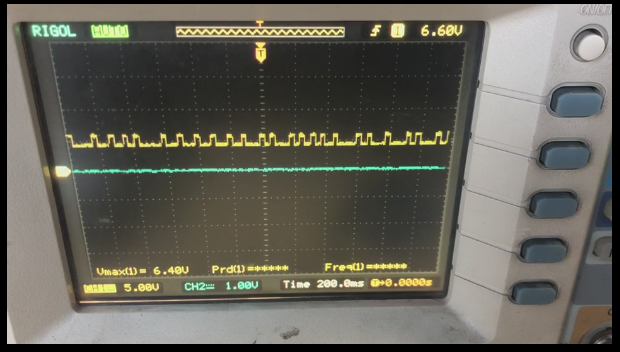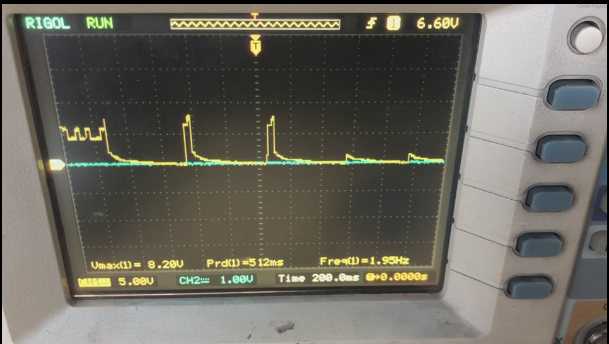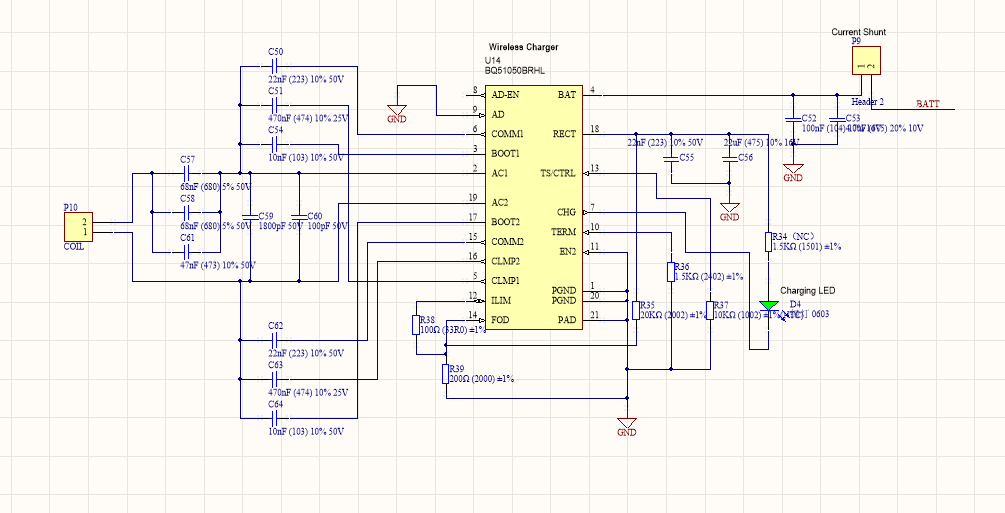Other Parts Discussed in Thread: BQ500212A
Currently, I use BQ51050B as the receiver for wireless charging, but now I have a problem that I cannot solve.Each charging process will be interrupted, and the transmitter failure indicator lights up, and can not be restored. According to RLIM, the charging current is set to about 1A.
My battery capacity is 1800 mah, Everything was fine when you started charging, When the battery voltage rises to about 3.7V, current 800 ma, Transmitter Failure Light on, and has no automatic recovery,The coil can only be removed from the transmitter and placed again on the transmitter to continue charging to 4.2V (or occasionally stop charging).I don't know what reason is this, below is the failure, VRECT voltage (yellow).At present, the coil I use is TDK wr483265-15f5-g 13.3uH. The transmitter is samsung ep-pn920. I really hope to get help.
Normal charging (VRECT)
abnormal VRECT
Total stop VRECT
What is the cause of this?
Please help me find out the problem as soon as possible.
thanks





